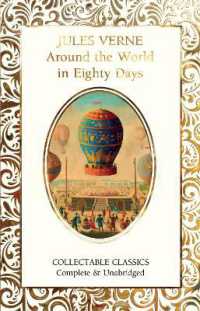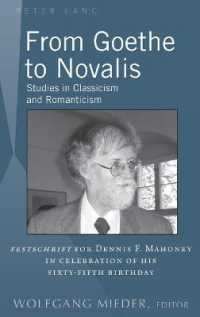基本説明
Through a highly original, in-depth case study of community art in the UK, this engaging book examines key themes and issues relevant to the study of art and anthropology today.
Full Description
Exploring key issues for the anthropology of art and art theory, this fascinating text provides the first in-depth study of community art from an anthropological perspective.The book focuses on the forty year history of Free Form Arts Trust, an arts group that played a major part in the 1970s struggle to carve out a space for community arts in Britain. Turning their back on the world of gallery art, the fine-artist founders of Free Form were determined to use their visual expertise to connect, through collaborative art projects, with the working-class people excluded by the established art world. In seeking to give the residents of poor communities a greater role in shaping their built environment, the artists' aesthetic practice would be transformed.Community Art examines this process of aesthetic transformation and its rejection of the individualized practice of the gallery artist. The Free Form story calls into question common understandings of the categories of "art," "expertise," and "community," and makes this story relevant beyond late twentieth-century and early twenty-first-century Britain.
Contents
PrefaceI. THE REJECTIONChapter 1: Art Inside and Outside the GalleryII. THE SHAPINGChapter 2: Moving Beyond the GalleryChapter 3: From Performance to the EnvironmentChapter 4: Community Arts and the Democratisation of ExpertiseChapter 5: Responding to Local Needs: GoldsmithsChapter 6: Making Art Collaboratively: ProvostChapter 7: Theoretical and Political LocationsIII. INTO THE 21ST CENTURYChapter 8: Free Form in 2004Chapter 9: A Carnival and a Standing StoneConclusion: Art and the CommunityBibliography







